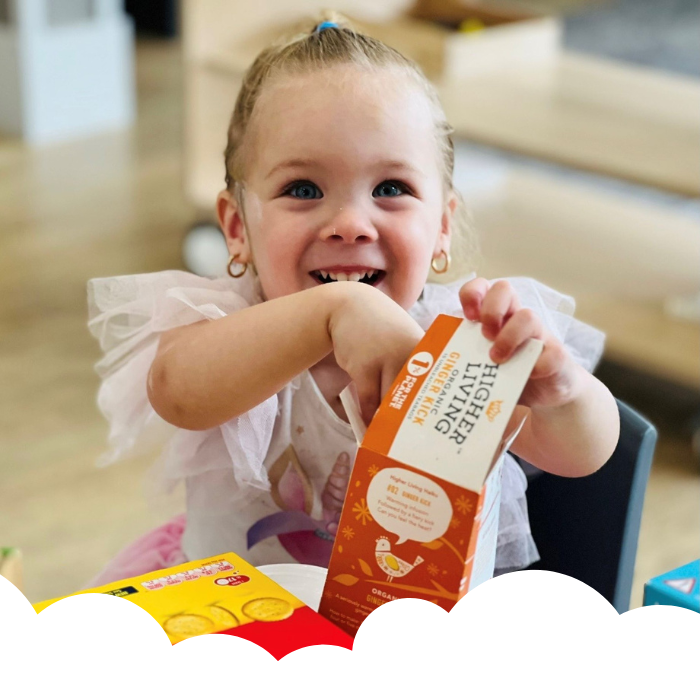
Raising Happy Kids: 10 Practical Strategies
Raising happy kids is a goal shared by most parents, yet it often feels elusive amidst the hustle and bustle of daily life. A happy family doesn’t just happen; it’s nurtured through love, attention, and specific parenting choices. As a childcare centre, Oz Education is committed to providing holistic development and well-being of our early learners through our broad based curriculum across our centers. Here, we delve into ten practical strategies that you can begin to implement today to best foster their growth and mental health.
1. Foster Emotional Intelligence
Building emotional intelligence in children is crucial for their personal and social development. It helps them recognize their own feelings and those of others, leading to better relationships and coping skills.
Practical Steps:
- Daily Check-ins: Set aside a few minutes each day for a family check-in where everyone shares their feelings. Use prompts like “What made you feel happy today?” or “Did anything make you feel upset?”.
- Emotion Charades: Play a game where family members act out different emotions, and others guess them. This fun activity can enhance recognition of feelings.
- Books on Emotions: Read books that focus on emotions with your children and discuss the characters’ feelings and responses.
2. Encourage Play
Play is essential for children’s development, allowing them to explore, interact, and learn in a fun way. It fosters creativity, problem-solving skills, and social connection.
Practical Steps:
- Create a Play Zone: Designate a space in your home for free play, stocked with art supplies, building blocks, and costumes.
- Limit Screen Time: Establish specific hours for electronic devices, ensuring that children engage in physical play each day.
- Organize Playdates: Schedule regular playdates with friends to promote social interaction and collaborative play.

3. Create Routines
Establishing routines provides children with structure, predictability, and a sense of security. This stability helps reduce anxiety and enhances their overall well-being.
Practical Steps:
- Visual Schedules: Create a colorful chart of daily routines that includes meal times, homework, and bedtime. This visual aid helps children know what to expect.
- Consistent Bedtime Rituals: Develop a calming bedtime routine that includes reading or quiet time. This sets a peaceful tone for sleep.
- Weekly Family Meetings: Dedicate time each week to review and plan family schedules, allowing kids to feel involved and secure.
4. Promote a Growth Mindset
Encouraging a growth mindset helps children understand that abilities and intelligence can be developed through effort and learning from mistakes. This fosters resilience and perseverance.
Practical Steps:
- Celebrate Effort: Praise your children for their hard work, regardless of the outcome. Use phrases like “You worked so hard on that!”
- Discuss Learning Experiences: After setbacks, discuss what can be learned from the situation, reinforcing the idea that failure is a part of growth.
- Role Model Growth Mindset: Share your challenges and how you overcame them, showcasing resilience and learning.
5. Model Gratitude
Teaching gratitude helps children appreciate their life experiences, leading to greater happiness and reduced feelings of entitlement. It promotes a positive outlook on life.
Practical Steps:
- Gratitude Jar: Start a family gratitude jar where family members can write down things they’re thankful for, reading them together at the end of each month.
- Thank You Notes: Encourage children to write thank you notes for gifts or kind acts, promoting acknowledgment and appreciation.
- Daily Gratitude Practice: Integrate a routine where each family member shares one thing they’re grateful for at dinner.
6. Spend Quality Time Together
Quality time strengthens the parent-child bond, making children feel valued and loved. This connection is vital for their emotional well-being and security.
Practical Steps:
- Family Traditions: Establish weekly family nights where you play games, cook dinner, or watch a movie together, ensuring it’s focused time for connection.
- Tech-Free Zones: Designate specific areas or times where technology is off-limits, allowing for uninterrupted conversations and bonding.
- Participate in Hobbies Together: Engage in activities your children enjoy, whether it’s painting, biking, or gardening, to strengthen your connection.
7. Encourage Independence
Allowing children to make choices and take on responsibilities fosters their self-confidence and teaches them accountability. It empowers them to navigate the world more effectively.
Practical Steps:
- Age-Appropriate Chores: Assign chores suitable for your child’s age that contribute to the household, fostering a sense of responsibility.
- Decision-Making Opportunities: Allow children to make choices, such as selecting their outfits or planning meals, to develop their autonomy.
- Praise Independence: Recognize your child’s efforts to act independently, reinforcing their confidence and decision-making skills.
8. Teach Empathy
Teaching empathy equips children with the ability to understand and relate to others’ feelings. This skill is crucial for forming healthy relationships and promoting kindness.
Practical Steps:
- Discuss Feelings in Stories: After reading, ask children how characters might feel and why, encouraging perspective-taking.
- Volunteer Together: Engage in community service as a family, which helps children understand different life situations and perspectives.
- Create a “Feelings Corner”: Set up a place in your home where kids can go to think about and express their feelings through art or writing.
9. Maintain Open Communication
Open communication fosters trust and strengthens relationships between parents and children. It encourages children to express their feelings openly, enhancing their emotional intelligence.
Practical Steps:
- Active Listening: Practice active listening skills by repeating back what your child says to ensure they feel heard.
- Encourage Sharing: Create a safe space where children can express their thoughts without fear of judgment, reinforcing trust.
- Regular Open Conversations: Set aside time each week for one-on-one conversations with each child to discuss their feelings and experiences.
10. Prioritize Your Well-being
When parents prioritize their own well-being, they are better equipped to nurture their children’s happiness and health. A balanced parent can model positive behaviors and attitudes for their children.
Practical Steps:
- Self-Care Routines: Establish regular self-care routines, whether it’s exercising, pursuing hobbies, or spending time with friends.
- Model Stress Management: Show your children how you manage stress positively, whether through mindfulness, exercise, or deep breathing.
- Seek Support: Don’t hesitate to seek help from friends, family, or professionals when needed, demonstrating the importance of community.
By incorporating these strategies and practical application steps into your daily life, you can nurture a happy family and help your children grow into well-rounded, content individuals. Remember, parenthood is a journey, not a destination. Moreover, we understand the numerous tasks needed to be completed as a parent and are here to offer our support. At Oz Education, we offer holistic play based learning and development programs within our childcare services to provide your child with the best head start. You can learn more about us by booking a tour or send us an enquiry.
Need a bit of Help?
At Oz Education, we understand the range of emotions from joy to uncertainty that comes within parenting. That is why we are committed to supporting both yourself and your family through all phases of parenting and childcare. With expertise and a nurturing approach we are here to provide guidance, answering questions and providing early infant child care focused on fostering little ones through their many learning and developmental milestones. Feel free to visit our Early Learning Centres by booking a tour with us to explore further care and support options through this exciting time.

